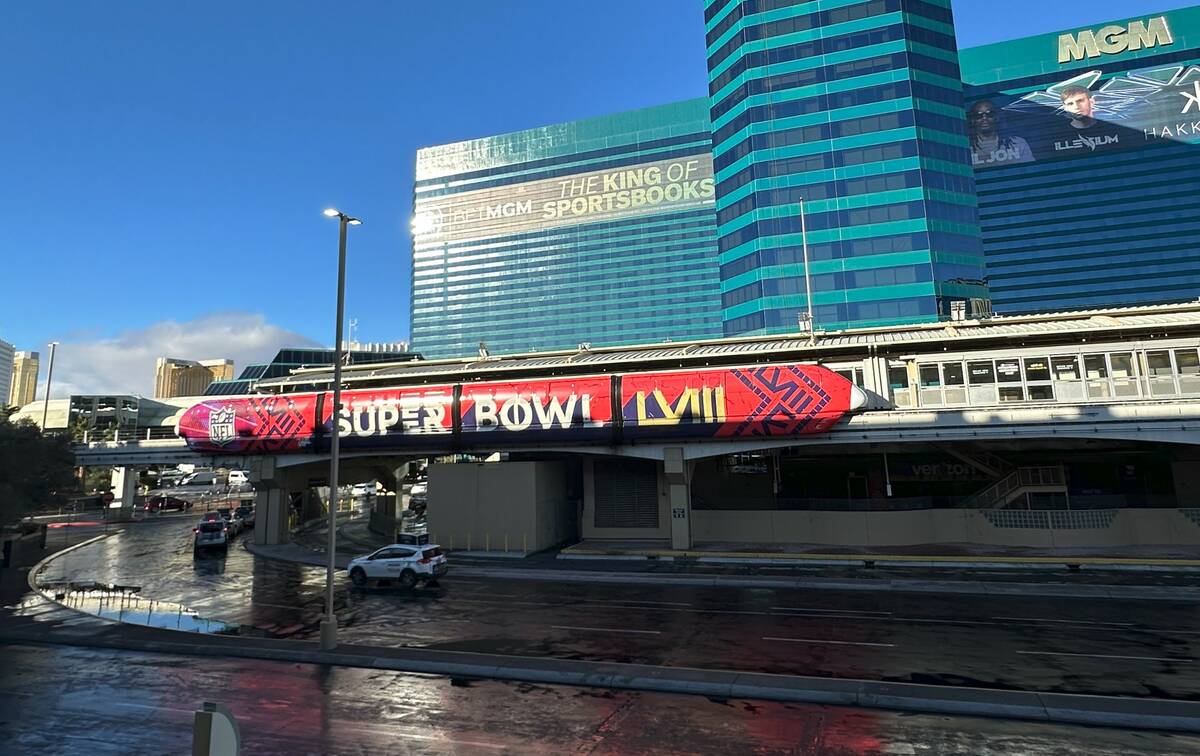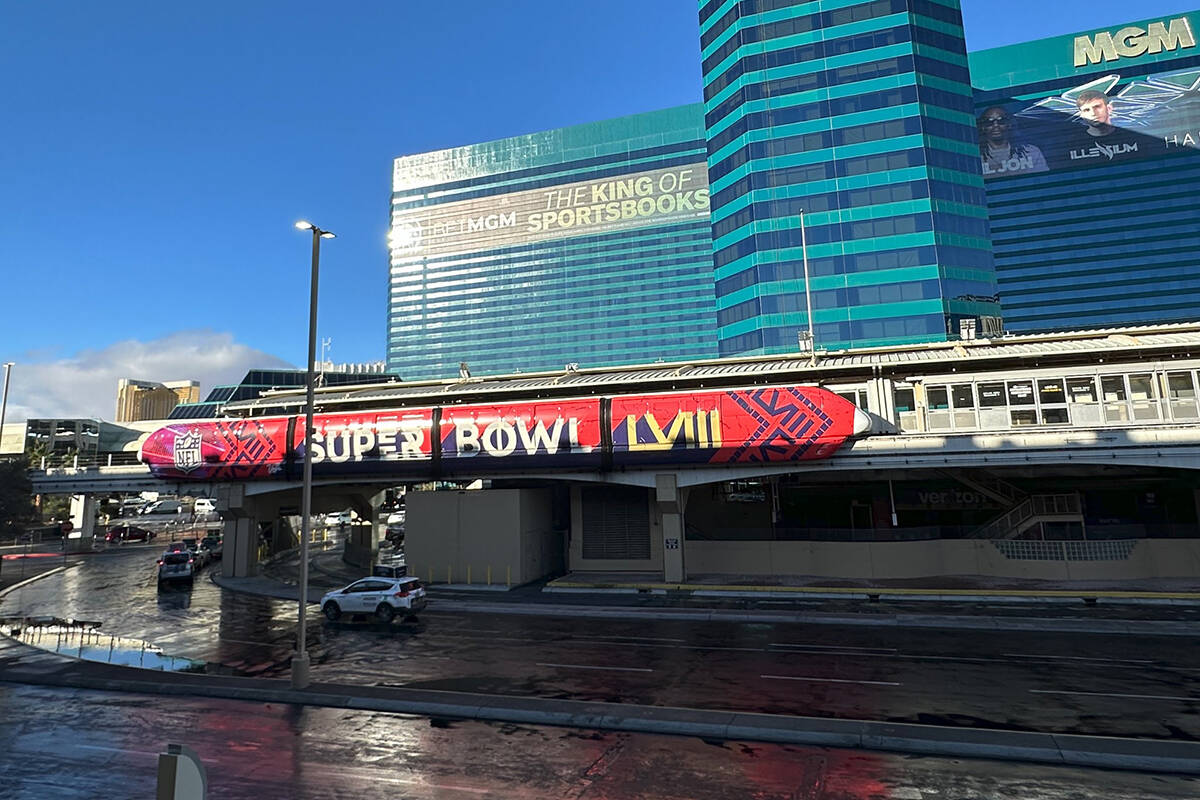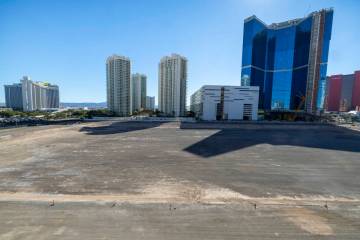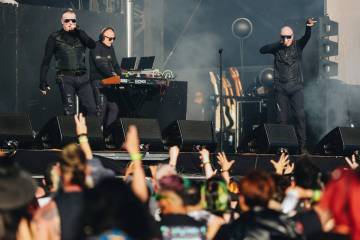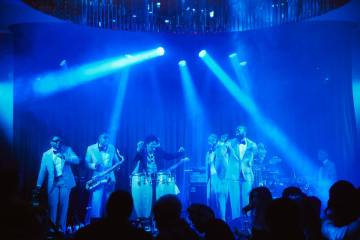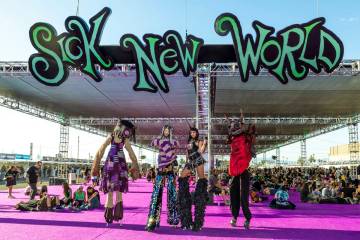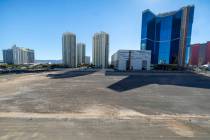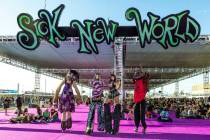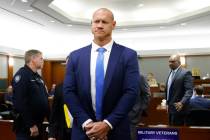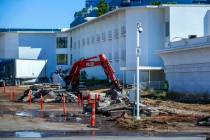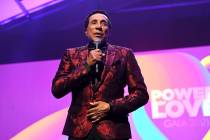Despite rumors, the monorail isn’t going anywhere … for now
Contrary to social media rumors the Las Vegas Monorail remains on track to transport riders in the resort corridor well into the near future.
Las Vegas Convention and Visitors Authority President and CEO Steve Hill said that despite the chatter, the tourism agency, which purchased the monorail for $24 million in late 2020, said the system will continue to run in its current form, featuring trains moving passengers on above-ground guideways.
But the LVCVA likely will look to repurpose it at some point when it is decommissioned in its current form.
“Our thoughts are we would like to extend this (monorail operations) as long as it makes sense to do so,” Hill said during the monthly LVCVA board meeting Tuesday. “That end could happen because the trains do wear out and are not replaceable.”
Another factor that could lead to the end of the monorail is the expansion and larger use of The Boring Company’s Vegas Loop operations, Hill said.
When, at some point, the LVCVA decides to end the monorail’s operations, Hill said the agency will look to use the raised guideways in another way and not dismantle the system. Hill envisions a potential elevated expressway, of sorts, with a couple of lanes of traffic in each direction, potentially tying the guideways into Boring Co.’s Vegas Loop operations.
“That would be the concept,” Hill said. “We haven’t done the engineering work to make sure that will work. But we think that the engineering will support that. It’s in the future, but that infrastructure is there, and it’s valuable, if it can be used, we would sure like to (repurpose it) in one way or another.”
The monorail system began operations in 1995, servicing just the MGM Grand and Bally’s, expanding to seven stations in 2004. It transports riders on 100 percent electric trains that move on two-way, above-ground guideways behind the Las Vegas Strip. The system moves riders between stations from the Sahara to the north, to the MGM Grand to the south.
The LVCVA’s purchase of the monorail came during the COVID-19 pandemic, when the system was not operating. At the time Clark County had $7 million on deposit to take care of decommissioning the system when that time came, which was transferred to the LVCVA. That made the net expense of the LVCVA’s purchase of the monorail about $17 million, Hill said.
“We parked it during COVID for about a year and that cost was about $3 million, so we’re into the monorail with a net number of about $20 million,” Hill said.
When the LVCVA purchased the monorail it was projected there was an eight-to-10-year lifespan of the system in its current form. That was tied to the lifespan of the trains used on the system and the $220 million price associated with replacing them.
“That was not something that we would probably contemplate moving forward,” Hill said.
The last three years of operating the monorail has been better than expected for the LVCVA, he said. The system has seen about 6 million passengers per year since tourism ramped up following the pandemic, Hill said.
“By the end of this calendar year we have made about $20 million on this monorail,” he said. “So basically have paid for it in the four-and-a-half-to-five-years that we will have owned it. And obviously it will improve from there.”
Contact Mick Akers at makers@reviewjournal.com or 702-387-2920. Follow @mickakers on X.



